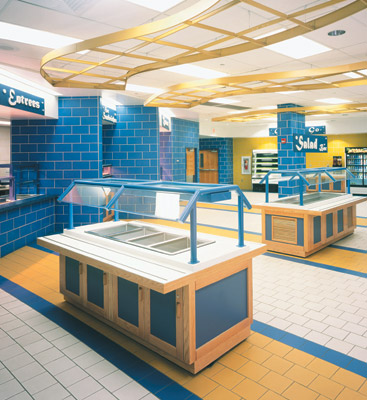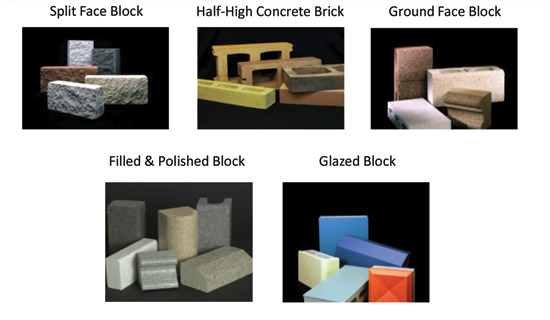Quality Masonry
Benefits of CMUs
From the beginning, CMU has been a sustainable material produced with local materials by local manufacturers using recycled content. In terms of length of service life, one has only to look at the pyramids and the great cathedrals of Europe to see the durability of masonry construction. By its very nature it conveys permanence and quality. Masonry endures, with little or no maintenance, and CMUs continue to be identified with longevity and low life-cycle cost. They are relatively inexpensive compared to competing products, and the variety of shapes, colors, textures, and sizes available gives architects a full palette.
CMUs also get high marks in energy efficiency. Materials such as insulation that have a high R-factor are usually associated with greater energy efficiency. However, this is not the entire picture as it neglects the benefit of thermal mass, which is a significant measure of a material's capacity to store heat for future distribution. Because they are high in mass, masonry walls offer excellent thermal insulation. Their slow rate of heat discharge keeps interiors warm in winters, and their high rate of heat absorption makes for cool interiors in summers. When used with complementary products or systems, CMUs are particularly energy efficient. The mass of a masonry building also pays off in preventing easy sound transmission, reducing noise pollution, and helping to achieve a quiet environment, a feature much sought after in public buildings that accommodate large numbers of people. Using masonry can also lead to savings on insurance and maintenance costs as the material won't burn, dent, rot, rust, or suffer insect infestation.
 |
Middletown Area High School in Middletown, Pennsylvania, uses colored glazed blocks. Photo courtesy of Oldcastle Architectural |
Types of CMUs
Today, manufacturers offer a wide range of CMU products that include gray block, architectural block, landscape block, half-high concrete brick, and several types of specialty block. Split face block, for example, is a concrete masonry unit composed of specialty colored aggregates and color additives put into the mix design. The split face texture offers a more rugged stone appearance and can add interest and dimension to an otherwise plain masonry wall.
Manufactured in a variety of colors and sizes, half-high concrete offers the advantage of a veneer-like appearance in economical single wythe construction. Half highs offer the same quality exterior finish as a cavity wall but with a shorter construction time. Half-high brick-like units are integrally colored and produced to the same standards as conventional masonry and share the latter's strength and resistance to fire and wind and ability to create a maintenance-free façade that is appropriate for new construction and particularly desirable in historic renovations.
In ground face block, also known as burnished block, diamond grinding heads are applied to the face to expose the aggregates. Grinding takes place after the block is cured; it is then sealed with a heat-treated factory acrylic. After the block is cleaned, manufacturers strongly recommended another post-applied coat of sealer for moisture protection and to bring out the color.
 |
|
Source: Oldcastle Architectural |
In filled and polished block, after the initial grinding process, the pores are filled by hand and rubbed with a cementitious slurry that is color specific to the block aggregates. The block is oven baked and the slurry then becomes an actual part of the block. The block faces are polished again in a multistage process, then lightly ground. A factory-applied clear satin gloss acrylic finish accentuates the natural beauty of the aggregates and provides moisture and graffiti resistance. Architects should make sure the filled and polished block they are specifying meets ASTM C-744 Standard Specification for Prefaced Concrete and Calcium Silicate Masonry Units.
Another specialty option is the glazed block, in which a thermoset glazing compound is permanently molded to one or more faces. Heat-treated and cured, the compound becomes an integral part of the unit. The result is a tight impervious surface that is easy to clean. This type of block is exceptionally resistant to staining, abrasion, impact, and chemicals. It is graffiti resistant and virtually impenetrable to spray paint, permanent markers, grease, or crayon. Glazed block is ideal for clean rooms as well, as it does not allow collection of dust, germs, or bacteria.
The designer's palette and opportunities for creativity are not limited to exterior applications for masonry. There are many fine examples of what can be accomplished with masonry interiors. Their inherent color variations and texture make CMUs an attractive design element, and with staggered placement, lightly contrasting mortar, or other treatment, they can add life to a space, creating an artistic look that reflects a smart modern design aesthetic.









